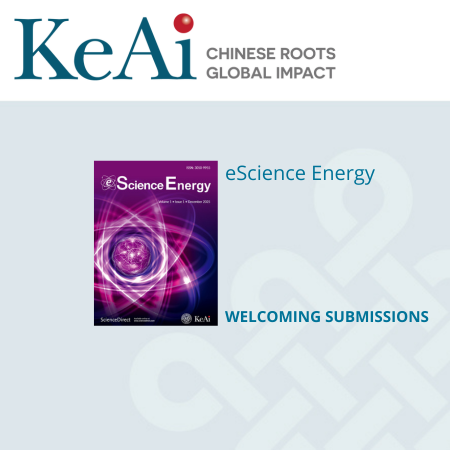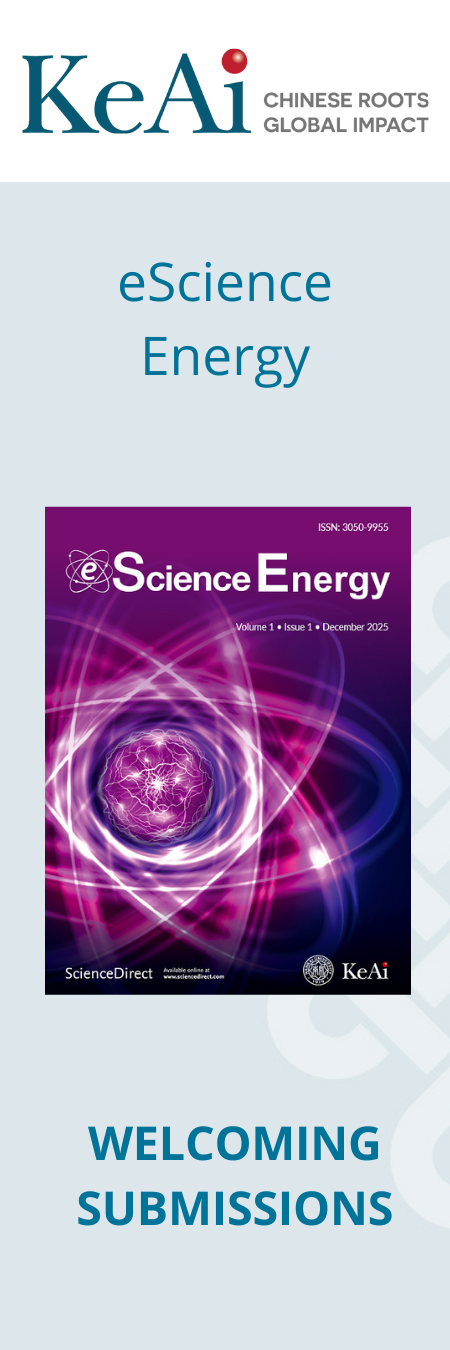Coupled optimization of electronic and lattice structure for sodium storage stability in layered sodium vanadate cathodes
Available online 9 December 2025
Layered sodium vanadate has attracted considerable attention as a promising cathode material for sodium-ion batteries, due to its multiple accessible vanadium valence states and large interlayer spacing....
Supramolecular chemistry of cellulose-based electrolytes
Available online 9 December 2025
Cellulose has garnered significant attention in material science and energy storage due to its unique supramolecular structure and excellent mechanical properties. In particular, cellulose-based electrolytes...
Promoting atomic ordering of intermetallic fuel cell catalysts by phase transition engineering
Available online 7 December 2025
High-temperature treatment generally promotes the atomic ordering transition (AOT) of alloys that easily results in the sintering behavior of catalysts. We demonstrate a novel phase transition induction...
Spinel nanodomains relieve strain and stabilize lattice oxygen in ultrahigh-nickel zero-cobalt cathodes
Available online 5 December 2025
Ultrahigh-nickel, zero-cobalt layered oxides are emerging as promising cathodes for next-generation lithium-ion batteries combining high capacity and cost effectiveness. However, the high nickel content...
Morphology-defect synergy in Cs2PdBr6 perovskite nanocrystals for enhanced photocatalytic CO2-to-CO conversion
Available online 4 December 2025
Designing efficient photocatalysts for the selective conversion of CO2 to CO is crucial for addressing energy and environmental challenges. Lead-free Cs2PdBr6 perovskite shows promise but suffers from...
Interfacial engineering of Cu9S5@MoS2 p-n type heterojunction via in situ phase separation for highly efficient electrocatalytic oxidation of 5-hydroxymethylfurfural
Available online 2 December 2025
In this study, a highly electrochemically active Mo-S-Cu interface connected via metal–sulfur bonds is synthesized through a Cu9S5@MoS2 p-n type heterojunction structure. This structure is ingeniously...
Multifunctional robotic electrofluid for soft fluidic actuation
November 2025
Like the vital role that multifunctional biological fluids play in living organisms, leveraging fluid multifunctionality offers a promising approach to enhance system capabilities without overcomplicating...
External field-assisted catalysis
November 2025
In recent years, substantial effort has been dedicated to improving the intrinsic catalytic activity of catalysts through structural modification, component regulation, and chemical state optimization....
Rational design of metal–organic framework-nanoparticle composite electrocatalysts for sustainable nitrogen electrochemistry
November 2025
A faster and more environmentally friendly nitrogen treatment solution is required to address the demand for nitrogen resources and the negative environmental impacts of human activities. Nitrogen electrochemistry...
Novel approaches to aqueous zinc-ion batteries: Challenges, strategies, and prospects
November 2025
Aqueous zinc-ion batteries (AZIBs) represent a forefront technology for grid-scale energy storage, distinguished by inherent safety, economic viability, and ecological compatibility. Nevertheless, prevailing...
Single-dopant long-range stabilization in long-cycled Li-rich layered cathodes via trace tetrahedral-site doping
November 2025
Migration of transition metal (TM) ions out of the TM layer is detrimental and unavoidable in lithium-rich layered oxides, which drives in-plane cation migration, O2 release and energy loss. Since out-of-plane...
Advances in dual-site mechanisms for designing high-performance oxygen evolution electrocatalysts
November 2025
The oxygen evolution reaction (OER), owing to its low kinetics, is a major obstacle to electrochemical water-splitting, which is essential for converting sustainable energy into clean and stable hydrogen...
Balancing reactant adsorption for ultra-stable electrocatalytic methanol oxidation reaction
November 2025
The practical application of the electrocatalytic methanol oxidation reaction (EMOR) has long been hindered by the lack of active and stable catalysts. Herein, we report a unique dealloyed PtMn catalyst...
Insights into electrocatalysis through in situ electrochemical surface-enhanced Raman spectroscopy
November 2025
Electrocatalysis plays an essential role in sustainable energy conversion technologies such as fuel cells, water electrolysis, and the carbon dioxide reduction reaction that occurs at solid–liquid interfaces....
Steering the adsorption modes and oxidation state of Co oxyhydroxide active sites to unlock selective glucose oxidation to formate for efficient solar reforming of biomass to green hydrogen
November 2025
One solution to the intermittency of renewable energy sources is energy storage in fuels such as hydrogen produced by water electrolysis. However, current water electrolysis systems are plagued by high...
Connecting adjacent active layers with structural pillars for high-performance Li-organic batteries
November 2025
Organic electrode materials with the versatility of molecular engineering emerge as promising alternatives to construct high-performance batteries. However, a weak binding force between active layers...
Metal ion-bonded two-dimensional framework non-Van der Waals sandwich heterojunctions for fast mass transfer in flexible in-plane micro-supercapacitors
November 2025
Two-dimensional (2D) reticular framework films featuring highly accessible surface areas, tunable active sites, and well-defined channels are promising candidates for flexible in-plane micro-supercapacitor...
Design of dual-electrode interfacial kinetics regulator for long-lasting Ah-level zinc-iodine batteries
November 2025
Zinc-iodine (Zn–I2) batteries hold great promise for large-scale applications, yet their practical deployment is constrained by uncontrollable iodine conversion, polyiodide shuttling, and unpredictable...
Site-specific stabilizing effect of single atoms on spinel oxides for acidic oxygen evolution
November 2025
Developing efficient and economical non-precious metal electrocatalysts for acidic oxygen evolution reaction (OER) is crucial for proton exchange membrane water electrolyzers (PEMWE). Spinel oxides...
High-entropy alloys for hydrogen storage, separation, and detection: recent progress and prospects
Available online 28 November 2025
As a pivotal clean energy carrier with promising efficiency, environmental friendliness, and sustainability, hydrogen stands at the forefront of the global energy technology revolution. However, achieving...
Natural biomass hydrogels for intelligent sensing: From component crosslinking engineering to stimuli-responsive mechanisms
Available online 19 November 2025
Natural biomass hydrogels are ideal candidate materials for sensors due to the structural tunability and abundant functional groups of natural biomass, and they have been widely applied in medical diagnosis,...
Oxygen-induced lithium inter-cage conduction for enhanced performance in all-solid-state batteries
Available online 18 November 2025
Sulfide-based all-solid-state batteries suffer from interfacial degradation between the cathode and solid electrolyte, making it essential to maintain high ionic conductivity under such conditions....
Solid polymer electrolyte chemistries tailored by solvation structures
Available online 17 November 2025
Solid polymer electrolytes (SPEs) endow lithium (Li) metal batteries with superior safety and energy density. However, sluggish Li ion (Li+) transport within the SPE inhibits its practical application....
Operando studies of lithium–sulfur redox reactions: A review
Available online 12 November 2025
In situ/operando techniques have been foundational for achieving a deep understanding of the complex, multistep Li–S redox reactions to enable the practical application of Li–S batteries. This includes...
Regulating lower hubbard band for tandem electrocatalytic lithium polysulfides conversion
Available online 11 November 2025
Catalytic conversion of lithium polysulfides (LiPSs) is a promising avenue to suppress the shuttle effect and enhance the redox kinetics of lithium–sulfur (Li–S) batteries. However, the consecutive...


